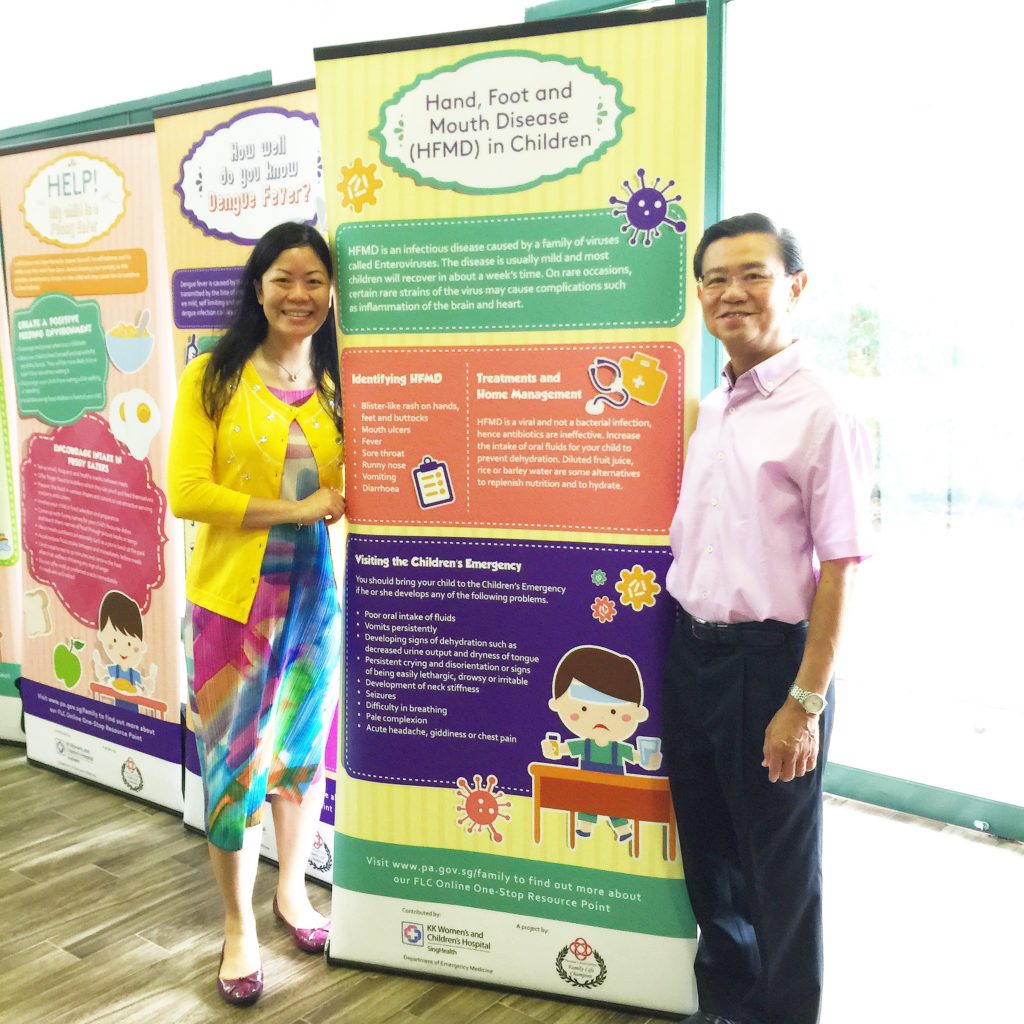Hand, Foot And Mouth Disease
Back Then
Hand, foot and mouth disease is common in Singapore, especially among the pre-schoolers. In fact, four years ago, the People’s Association asked me to help turn out a poster describing this illness: https://www.pa.gov.sg/docs/default-source/module-documents/page-documents/cdh—hfmd-in-children.pdf . In addition, I gave a talk on HFMD at a PA event while heavily pregnant with M6. At this event, I remember chatting with the guest of honor, Mr Wong Kan Seng, while showing him my poster. We commented on how highly infectious this illness is. Naively, I remarked that in all my years working the Children’s Emergency, I hadn’t once caught it.
Never Say Never
Now this was as predictably ironic as the nameless extras in war movies who promise their wives they’ll return soon; they wind up shot in the next scene. Consequently, HFMD came to visit our household two years later: https://mummyfique.com/jade-6-month-long-battle-hfmd/.
For Future Reference
Even now, we continue to see many patients with this illness in the Children’s Emergency. While some are admitted for complications like dehydration, many can be seen by the polyclinic or GP. Therefore, I thought I would record a couple of videos about it, with one of my student interns.
Facts
Cause & Treatment
The most important thing to note is that this is a viral illness that can be caused by different strains. By extension, this means your child can be infected more than once and antibiotics are not useful. Consequently, the medicines prescribed by the doctor might be for viral symptoms, like fever, cough or diarrhea.
Often parents ask if there is anything we can give for oral ulcers. Unfortunately, medication like bonjella is only useful if the ulcers are in the front of the mouth. As most are at the back of the throat, topical medication is less helpful. Parents also ask for ointment to apply on the small pustular rash that is present on the hands, arms, feet, legs and buttocks. However, not only are ointments unhelpful, applying them might cause the blisters to burst and spread the infectious fluid.
Prevention
As for the other siblings, the only way to prevent them from catching HFMD is isolation. Being a mother of many, I appreciate how tricky this can be. In fact, as hand, foot and mouth disease is spread via direct contact with bodily fluids and the fecal-oral route, caregivers themselves are at risk. The innocent kiss or diaper change is suddenly an opportunity for infection.
This video summarises the facts about hand, foot and mouth disease:
Red Flags
Common Complications: Dehydration & Fever
Fortunately, other than the fact that it is very infectious, this virus is mostly a mild inconvenience for the seven to ten days. A common complication is poor feeding due to the oral ulcers, especially in the young ones. So you might notice your child has less urine and a dry tongue, or even cries without tears.
In addition, all complications associated with fever in a young child apply. Let Us Talk About Fever In Children. Also, please see: Facts And Figures About Fever Fits.
Rare Complications
Occasionally, the virus infects the brain or heart, making your child very ill. If so, he may have extreme lethargy, irritability, neck stiffness, severe headache or fits. He may also be pale, giddy, short of breath or extremely unwell. Hence it is important to note the red flags so you know when HFMD is a medical emergency.
This video summarises when you should rush to the Children’s Emergency and when you could wait to see a GP:

